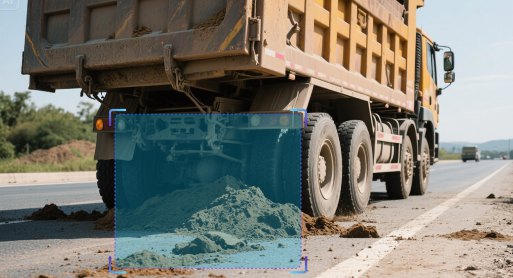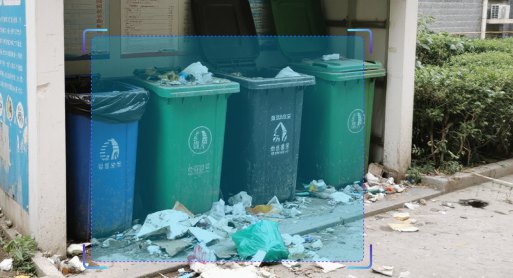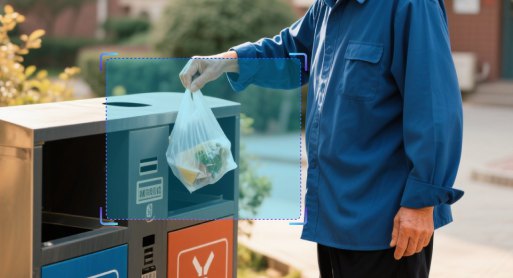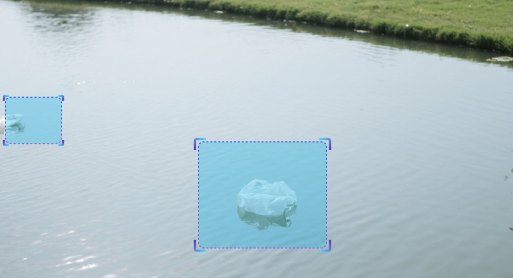
Trash Bin Overflow Detection
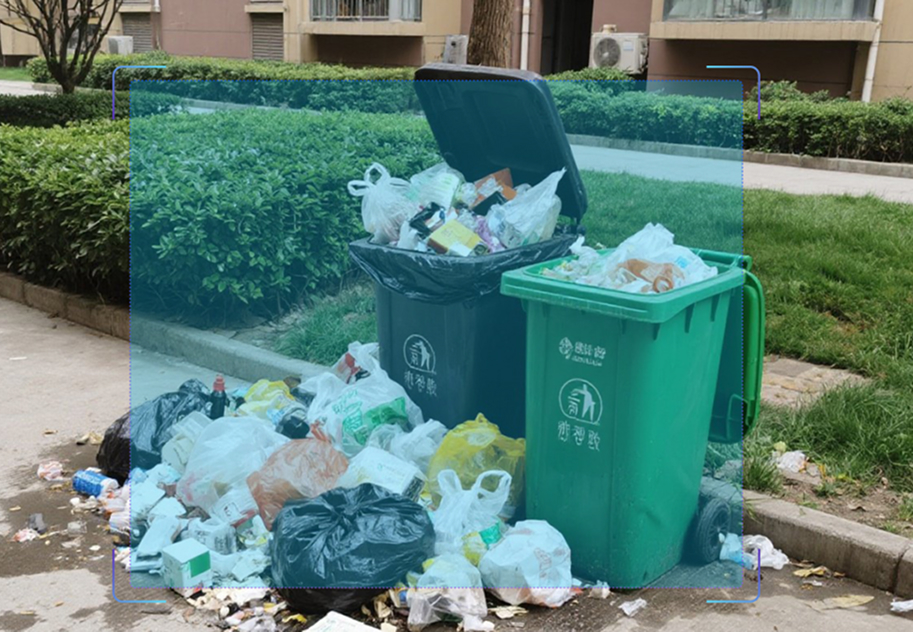
Algorithm Introduction
The system employs AI algorithms to analyze the fill-level status of public trash bins, detecting overflow conditions and recording precise bin location information in real time for dispatch to collection crews. It integrates with waste management systems to optimize collection routes, thereby minimizing resource waste and environmental impact. This solution supports sanitation departments in establishing refined, digitized management mechanisms.
- ● Image Requirements:
- Minimum target size: 60(width)×90(height) pixels
- Detection accuracy guaranteed when IoU ≥0.8
- Clear, unobstructed imaging conditions
- ● Operational Conditions:
- Optimal performance during daytime
- Accuracy may degrade under strong backlight, nighttime, or adverse weather conditions
Application Value
-

Urban Roadways
The algorithm implements intelligent monitoring of street-side trash bins. Upon detecting overflow, the system immediately triggers an alert and dispatches collection tasks to ensure urban cleanliness. -

Parks/Campuses/Commercial Areas
At waste collection points in various public spaces, the algorithm enables real-time overflow detection for trash bins, effectively enhancing management and service standards in scenic areas and parks. -

Transportation Hubs
Implement dynamic monitoring of frequently used trash bins at bus stops, subway stations, and similar locations to minimize rubbish overflow and improve passenger experience.
FAQ
-
Algorithm AccuracyAll algorithms published on the website claim accuracies above 90 %. However, real-world performance drops can occur for the following reasons:
(1) Poor imaging quality, such as
• Strong light, backlight, nighttime, rain, snow, or fog degrading image quality
• Low resolution, motion blur, lens contamination, compression artifacts, or sensor noise
• Targets being partially or fully occluded (common in object detection, tracking, and pose estimation)
(2) The website provides two broad classes of algorithms: general-purpose and long-tail (rare scenes, uncommon object categories, or insufficient training data). Long-tail algorithms typically exhibit weaker generalization.
(3) Accuracy is not guaranteed in boundary or extreme scenarios.
-
Deployment & InferenceWe offer multiple deployment formats—Models, Applets and SDKs.
Compatibility has been verified with more than ten domestic chip vendors, including Huawei Ascend, Iluvatar, and Denglin, ensuring full support for China-made CPUs, GPUs, and NPUs to meet high-grade IT innovation requirements.
For each hardware configuration, we select and deploy a high-accuracy model whose parameter count is optimally matched to the available compute power.
-
How to Customize an AlgorithmAll algorithms showcased on the website come with ready-to-use models and corresponding application examples. If you need further optimization or customization, choose one of the following paths:
(1) Standard Customization (highest accuracy, longer lead time)
Requirements discussion → collect valid data (≥1 000 images or ≥100 video clips from your scenario) → custom algorithm development & deployment → acceptance testing
(2) Rapid Implementation (Monolith:https://monolith.sensefoundry.cn/)
Monolith provides an intuitive, web-based interface that requires no deep AI expertise. In as little as 30 minutes you can upload data, leverage smart annotation, train, and deploy a high-performance vision model end-to-end—dramatically shortening the algorithm production cycle.



